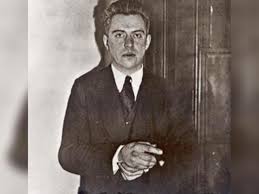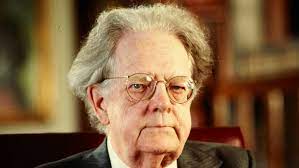Biography and Work Of Hart Crane In American poetry
Hart Crane, born Harold Hart Crane on July 21, 1899, in Garrettsville, Ohio, was as an American poet whose brief but significant life profoundly influenced modernist poetry. Crane is renowned for his intricate structures, rich symbolic imagery, and in-depth examination of the human condition in his works. Crane overcame obstacles in his personal and professional life, but his contributions to American literature never lose their power to inspire and move readers.
Early Life and Education
Hart Crane was born into a tumultuous family environment.
When he was eight years old, his parents, Clarence Arthur Crane and Grace Edna Hart Crane, got divorced. Crane’s mother remarried multiple times, and his father battled alcoholism, making for an unstable childhood. Crane showed an early interest in literature and poetry in spite of these obstacles, hinting at his future success as a poet.
Crane struggled academically and dropped out of high school despite attending several different Ohio schools. Despite having little formal education, he became passionate about poetry and literature. Crane relocated to New York City when he was seventeen years old in an attempt to fully immerse himself in the thriving artistic and cultural milieu of the 1920s.
Literary Influences and Early Works
In New York, Crane found himself in the midst of the modernist movement, surrounded by influential figures such as Ezra Pound, T.S. Eliot, and Marianne Moore. These poets, along with his exploration of French symbolist poetry, deeply influenced Crane’s poetic style. His early works, such as “Black Tambourine” and “Emblems of Conduct,” showcased his evolving voice and fascination with symbolism.

Crane’s exploration of sexuality and desire became evident in his poetry, reflecting the complex and often turbulent relationships he experienced in his personal life. His bold and unconventional approach to these themes distinguished him as a unique voice in American poetry.
White Buildings and Recognition
In 1926, Crane published his first significant collection of poems, “White Buildings.” The collection received positive reviews, establishing Crane as a promising poet with a distinctive voice. “White Buildings” explored themes of love, desire, and the search for meaning in the modern world. The poems showcased Crane’s ability to blend traditional forms with avant-garde elements, setting the stage for his later, more ambitious works.
Personal Struggles and Tragic End
Hart Crane’s life was plagued by issues of mental health, substance abuse, and strained relationships. His homosexuality, a taboo subject in the early 20th century, added an extra layer of complexity to his personal struggles. Crane’s romantic relationships were often tumultuous, and he faced societal judgment for his nonconformity.
Also Read-
As his personal life unraveled, Crane’s mental health deteriorated. Financial difficulties and the critical reception of “The Bridge” took a toll on his well-being. In 1932, at the age of 32, Crane boarded a steamship bound for Mexico, hoping for a fresh start. However, the voyage ended in tragedy.
On April 27, 1932, while the ship was en route to New York, Crane jumped overboard and was lost at sea. His body was never recovered. The circumstances surrounding his death remain a subject of speculation and mystery, adding a tragic layer to the narrative of his life.
- White Buildings (1926): This was Crane’s first significant collection of poems, and it marked his entry into the world of modernist poetry. The poems in this collection explore themes of love, desire, and the human experience. Notable poems from this collection include “For the Marriage of Faustus and Helen” and “Chaplinesque.”
- The Bridge (1930): Considered Crane’s magnum opus, “The Bridge” is an epic poem that explores the cultural, historical, and spiritual landscape of America. Divided into sections, the poem reflects Crane’s belief in the power of art to redeem and unify. It includes the famous poem “The Bridge” and is known for its intricate structure and symbolism.
- Voyages (published posthumously in 1957): This collection was published after Crane’s death and includes a series of love poems that are both personal and intensely symbolic. The poems in “Voyages” delve into themes of love, desire, and the complexities of human relationships. The collection provides insight into Crane’s personal struggles and desires.
- The Broken Tower (published posthumously in 1932): This posthumous collection, named after one of Crane’s poems, includes a selection of his later works. “The Broken Tower” reflects Crane’s continued exploration of complex themes, showcasing his evolving poetic style and the challenges he faced in his personal life.
- Collected Poems (1933): Published the year after Crane’s death, this collection brought together the entirety of his poetic output. It includes poems from “White Buildings,” “The Bridge,” and a selection of his later works. The publication of this collection helped solidify Crane’s reputation as a significant figure in American modernist poetry.
Notable Poems:
- “The Bridge”: The titular poem from Crane’s epic work is a celebration of the Brooklyn Bridge, serving as a metaphor for the potential unity of the American people. It is considered one of Crane’s masterpieces, showcasing his ability to blend personal and cultural themes.
- “To Brooklyn Bridge”: This poem is a part of “The Bridge” and is often anthologized separately. It reflects Crane’s admiration for the bridge as a symbol of human achievement and connection. The poem’s vivid imagery and symbolic language are representative of Crane’s poetic style.
- “The Broken Tower”: This poem, which shares its name with the posthumous collection, is one of Crane’s later works. It explores themes of artistic creation, struggle, and the inherent challenges faced by the poet. The poem is often seen as a reflection of Crane’s personal struggles.
Death:
Hart Crane’s death is a tragic and mysterious event that occurred on April 27, 1932. At the age of 32, the acclaimed American poet met a premature end during a voyage on the steamship SS Orizaba, which was en route from Mexico to New York. The circumstances surrounding his death remain the subject of speculation, and the exact details are not entirely clear.
- Innovative Poetic Style:
- Crane was a pioneer of modernist poetry, experimenting with form, language, and symbolism. His use of dense, complex imagery and innovative structures set him apart from many of his contemporaries. Crane’s work, particularly “The Bridge,” reflects a departure from traditional poetic conventions.
- “The Bridge” as a Modernist Masterpiece:
- Crane’s most celebrated work, “The Bridge,” is often regarded as a modernist masterpiece. Published in 1930, this epic poem explores the complexities of American identity, history, and the human experience. The poem’s structure, combining historical and personal elements, showcases Crane’s ambitious and experimental approach to poetry.
- Symbolism and Mythology:
- Crane’s poetry often draws upon rich symbolism and mythology. He weaves intricate images and allusions, incorporating a diverse range of cultural and historical references. This layering of symbolism adds depth and complexity to his work, inviting readers to engage in a multifaceted exploration of meaning.
- Influence on Later Poets:
- Despite his relatively short career, Crane’s influence extends to later generations of poets. His innovative use of language and form, as well as his willingness to grapple with complex themes, inspired poets who came after him. Notable poets, such as Allen Ginsberg and Harold Bloom, have acknowledged Crane’s impact on their work.
- Exploration of American Identity:
- “The Bridge” serves as a significant exploration of American identity, presenting a panoramic view of the nation’s history and culture. Crane’s portrayal of the Brooklyn Bridge as a symbol of connection and transformation reflects his deep engagement with the American landscape and the evolving spirit of the nation.
- Personal Struggles and Tragic End:
- Crane’s personal struggles, including his challenges with his sexuality and issues related to mental health, contribute to the understanding of his work. His tragic suicide at the age of 32 in 1932 marked the premature end of a promising literary career, leaving scholars to ponder the potential trajectory of his contributions had he lived longer.
- Reevaluation and Recognition:
- While Crane faced challenges and criticism during his lifetime, his work has undergone reevaluation in the years following his death. Critics and scholars have revisited his poems, recognizing the depth of his contributions to modernist poetry and the enduring relevance of his themes.
- Contributions to Modernist Movement:
- As a central figure in the modernist movement, Crane engaged with the broader cultural and artistic shifts of his time. Alongside other modernist poets like T.S. Eliot and Ezra Pound, Crane played a role in reshaping the trajectory of 20th-century poetry, moving it away from traditional forms and toward more experimental and fragmented expressions.
- 1899 (July 21): Harold Hart Crane is born in Garrettsville, Ohio, to Clarence Arthur Crane and Grace Edna Hart Crane.
- 1916-1917: Crane attends various schools in Ohio but struggles academically. He does not complete high school.
- 1920s: Crane moves to New York City to immerse himself in the cultural and artistic scene of the 1920s. He becomes part of the modernist literary circles and is influenced by poets like T.S. Eliot, Ezra Pound, and Marianne Moore.
- 1923: Crane’s first known poem, “My Grandmother’s Love Letters,” is published in The Pagan.
- 1926: Crane publishes his first significant collection of poems, “White Buildings,” which receives positive reviews.
- 1930: Crane publishes his magnum opus, the epic poem “The Bridge.” The poem explores American history, culture, and landscape.
- 1931: Facing financial difficulties and mixed critical reception of “The Bridge,” Crane’s mental health begins to deteriorate.
- 1932 (April): Crane embarks on a voyage to Mexico in an attempt to escape personal and professional challenges.
- 1932 (April 27): Crane jumps overboard from the SS Orizaba and is lost at sea. His body is never recovered.
- 1933: A memorial edition of Crane’s collected poems is published, solidifying his place in the canon of American literature.
- 1957: The posthumous collection “Voyages” is published, including a series of love poems.
- 1972: “The Complete Poems and Selected Letters and Prose of Hart Crane” is published, further contributing to the preservation and appreciation of his work.
- 21st Century: Hart Crane’s legacy continues to be studied and celebrated, with ongoing critical appreciation of his contributions to modernist poetry.

















